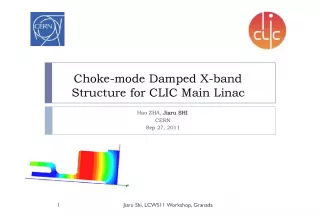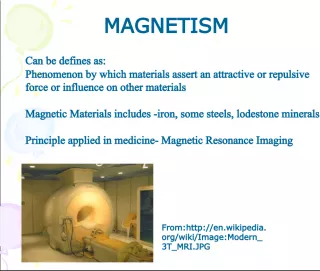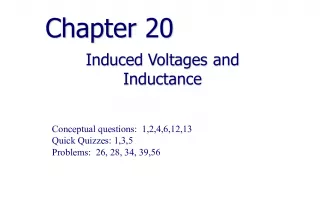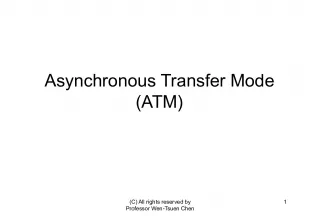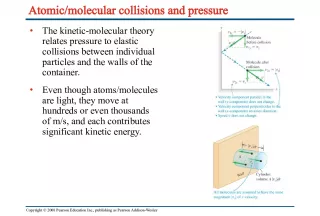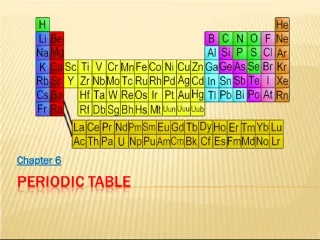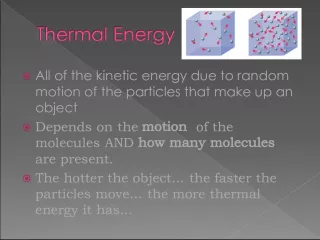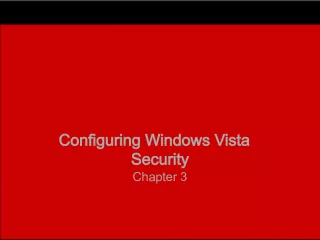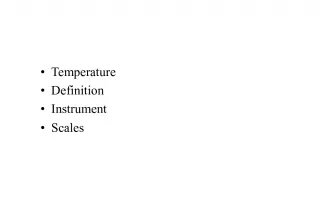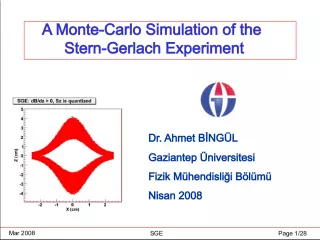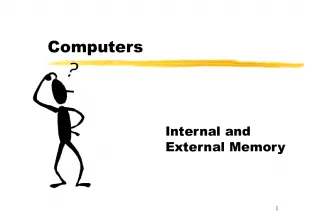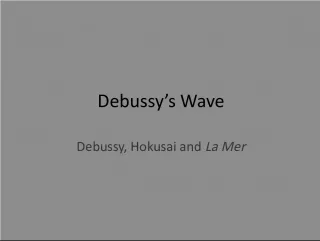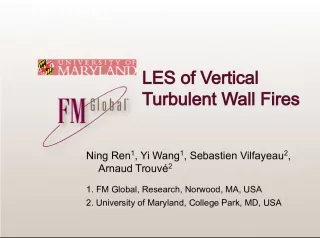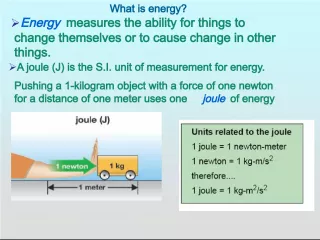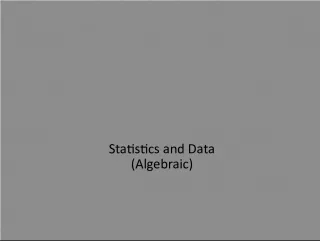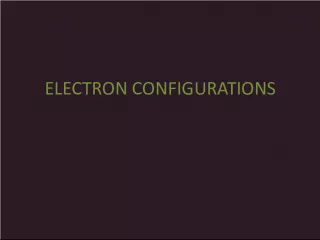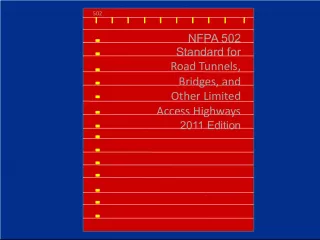Influence of Magnetic Configuration on Kinetic Damping of Resistive Wall Mode
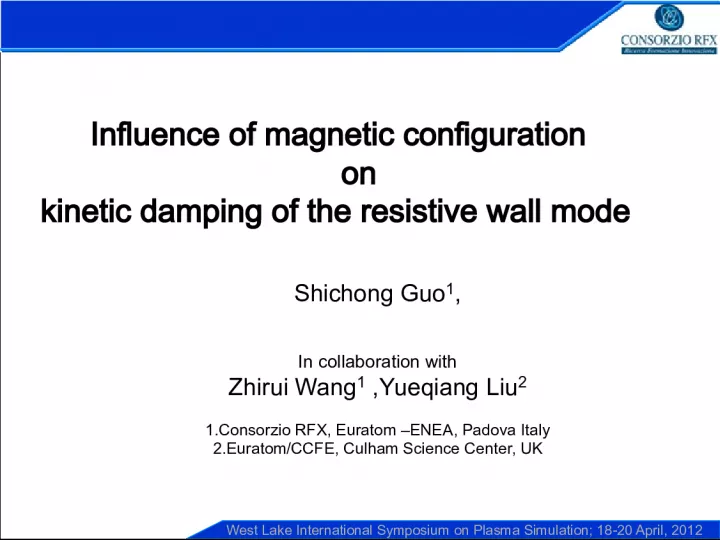

This presentation discusses the impact of magnetic configuration on the kinetic damping of the resistive wall mode in plasma simulations. Presented at the West Lake International Symposium on Plasma Simulation in 2012 by Shichong Guo in collaboration with Zhirui Wang and Yueqiang Liu from Consorzio RFX and Euratom CCFE.
- Uploaded on | 0 Views
-
 aniyafahey
aniyafahey
About Influence of Magnetic Configuration on Kinetic Damping of Resistive Wall Mode
PowerPoint presentation about 'Influence of Magnetic Configuration on Kinetic Damping of Resistive Wall Mode'. This presentation describes the topic on This presentation discusses the impact of magnetic configuration on the kinetic damping of the resistive wall mode in plasma simulations. Presented at the West Lake International Symposium on Plasma Simulation in 2012 by Shichong Guo in collaboration with Zhirui Wang and Yueqiang Liu from Consorzio RFX and Euratom CCFE.. The key topics included in this slideshow are plasma simulation, magnetic configuration, kinetic damping, resistive wall mode, Consorzio RFX,. Download this presentation absolutely free.
Presentation Transcript
1. West Lake International Symposium on Plasma Simulation; 18-20 April, 2012 Influence of magnetic configuration on kinetic damping of the resistive wall mode Shichong Guo 1 , In collaboration with Zhirui Wang 1 ,Yueqiang Liu 2 1.Consorzio RFX, Euratom ENEA, Padova Italy 2.Euratom/CCFE, Culham Science Center, UK
2. West Lake International Symposium on Plasma Simulation; 18-20 April, 2012 Consorzio RFX ( Consortium R eversed F ield e X periment) RFX-mod
3. West Lake International Symposium on Plasma Simulation; 18-20 April, 2012 Resistive Wall Mode Importance of Resistive Wall Mode (RWM) Understanding the physics of RWM is an important task for the successful operation of the present day and future fusion devices. For advanced tokamak scenarios, including those foreseen for ITER, and aiming at simultaneous maximization of the plasma pressure and a steady state operation, the RWM poses a severe beta limit. For Reversed Field Pinch (RFP) plasmas, the RWM appears as potentially disruptive instability, whenever the duration of the discharge is longer than the penetration time of the passive conducting structure (resistive wall). RFX Feedback coils
4. West Lake International Symposium on Plasma Simulation; 18-20 April, 2012 Ideal external kink - Idea external kink + Resistive wall - The growth rate are comparable to the resistive diffusion time of the wall w ~ 1 (cylindrical mode and thin shell) Resistive Wall Mode RWM dispersion relation Vacuum energy without wall Vacuum energy with ideal wall at r=b Magnetic penetrating time of resistive wall Plasma potential energy
5. West Lake International Symposium on Plasma Simulation; 18-20 April, 2012 RWM RFP and Circular Tokamak Configurations RFP B ~B Tokamak B << B B reverses near the plasma edge F = B (a)/ = B (a)/. RWMs are current driven and rational surfaces outside the plasmas. Usually Pressure driven RWMs Rational surfaces inside/outside the plasmas (m,n) RWM (n=1) RFX-mod system parameters e.g. =a/R=0.2295, b/a=1.12
6. West Lake International Symposium on Plasma Simulation; 18-20 April, 2012 RWM in RFP and Circular Tokamak Usually only one poloidal harmonic is dominant --less importance of toroidal effects RFP has weaker poloidal asymmetry; Low q:The distance between the two neighboring rational surfaces (m 1)/n is larger than tokamak. Strong toroidal mode coupling due to poloidal asymmetry (toroidal effects). Many m modes grow together and give contributions to mode growth rate. Poloidal harmonics of the normal perturbed displacement. Tokamak n=1 RFP n=6 MARS result in toroidal geometry
7. West Lake International Symposium on Plasma Simulation; 18-20 April, 2012 Magnetic field curvature is dominated by B , so the bad curvature everywhere along the poloidal angle--- almost no ballooning character. 2D plot of normal perturbed displacement Tokamak n=1 Magnetic field curvature is dominated by B (bad curvature on the low field side, good curvature on the high field side) ballooning character. RWM in RFP and Circular Tokamak RFP n=6 MARS result in toroidal geometry
8. West Lake International Symposium on Plasma Simulation; 18-20 April, 2012 The linearized MHD equations including drift kinetic effects via perturbed pressure tensor (only consider the thermal particles) - *N and *T are the diamagnetic drift frequencies - d and b are the precession and bounce frequencies - the trapped particle =0, the passing particle =1. Thermal Maxwellian distribution - the plasma rotation frequency Thin shell is located at r=b Resonant operator: Mars-K formulation (MHD-Kinetic hybrid code) Kinetic effect enter into MHD formulations though the non- perturbative way replaced by kinetic pressure
9. West Lake International Symposium on Plasma Simulation; 18-20 April, 2012 The generalized dispersion relation for RWM (Neglecting inertia term ) The new module for analyzing the potential energy components is integrated into Mars-F/K Magnetic compressibility Pressure driven Magnetic bending Current driven Bo Hu and R. Betti PRL 2004 Vacuum energy terms when ideal wall is at infinity r= and r=b Kinetic energy replaces the plasma compressibility term in fluid theory and can be complex number (mode particle resonance) W k = W k re + i W k i Kinetic energy: Vacuum energy: Plasma fluid energy: Quadratic energy terms
10. West Lake International Symposium on Plasma Simulation; 18-20 April, 2012 Kinetic stabilization of RWM in RFP n=6, n e0 =n i0 =2.5e19m -3 , a/R=0.2295 ,T i/ T e =0.7, b/a=1.12 F -0.062, q 0 0.144. 1.46-1.56 n=6 Full kinetic scan Fluid theory predicts that the stabilization of RWM requires the plasma rotation in the range of Alfven frequency. n c ( k || V A ) r=0 or r=a , 0.15 A , n=6 Kinetic theory predicts much lower plasma rotation =0.03-0.04 A for stabilizing n=6 RWM in the region of ion acoustic frequency for high beta RFP( p >0.15). Uniform plasma flow is assumed
11. West Lake International Symposium on Plasma Simulation; 18-20 April, 2012 The mode resonance with transit frequency of passing ions plays a principle role (the ion acoustic landau damping). Kinetic damping of RWM in RFP n=6, n e0 =n i0 =2.5e19m -3 , a/R=0.2295 ,T i/ T e =0.7, b/a=1.12 F -0.062, q 0 0.144. 1.46-1.56 n=6 p =0.17 Uniform plasma flow is assumed Which kinetic mechanism leads to the stabilization in RFP?
12. West Lake International Symposium on Plasma Simulation; 18-20 April, 2012 Kinetic effect on RWM in Tokamak The current driven RWM (q a =1.64) can not be stabilized by the kinetic effects. The pressure driven RWM (q a =3.68) can be stabilized at very slow plasma rotation ( <4.8 10 -3 A ) or even without rotation. n=1, n e0 =n i0 =2.5e19m -3 , a/R=0.2295 ,T i /T e =0.7, b/a=1.12 Current driven Pressure driven Full kinetic scan n=1
13. West Lake International Symposium on Plasma Simulation; 18-20 April, 2012 Kinetic effect on RWM in Tokamak n=1, n e0 =n i0 =2.5e19m -3 , a/R=0.2295 ,T i /T e =0.7, b/a=1.12 q 0 =1.14 q a =3.68 =0.0105,C =0.66 The pressure driven RWM (q a =3.68) can be stabilized by the precession resonance of trapped particles (the principle candidate). >4.8 10 -3 A, the mode becomes unstable. Further increasing the rotation frequency, the transit resonance will play a stabilizing role by ion acoustic damping, and the mode growth rate will decrease; however, a full stabilization is not found in this case. Which kinetic mechanism leads to the stabilization in pressure driven tokamak?
14. West Lake International Symposium on Plasma Simulation; 18-20 April, 2012 2D plot of d averaged over velocity space of Tokamak In tokamak ( ~0) d ~ 0(Tokamak), d ~0.01 A (RFP), larger ratio of * / d ( ml * / d ) than RFP Trapped particles fraction in Tokamak ~ 1/2 > 1/2 in RFP Many m modes can resonate with trapped particles, but RFP has only one mode that can have resonance. Physical understanding of Kinetic effect Why can RWM be stabilized by low rotation in tokamak but not in RFP? 2D plot of W k contributed by the precession resonance
15. West Lake International Symposium on Plasma Simulation; 18-20 April, 2012 2D plot of | W K m=1,n=6 b/.a=1.12 F -0.062, q 0 0.144 Why transit resonance can stabilize RWM in RFP but the precession and bounce resonance can not? Physical understanding of Kinetic effect The maximum value of dominant term in perturbed Lagrangian H L leading to max. | W K | . p =0.1 W K (Transit) 2D plot of | | m=-1,n=6 RFP p =0.17 =0.02 A (marginal instability) The transit resonance gives the dominant contribution to W k , when (m-nq) p /n Precession resonance gives small contribution to W k since the fraction of trapped particles is smaller than that of passing particles in RFP.
16. West Lake International Symposium on Plasma Simulation; 18-20 April, 2012 F -0.062, q 0 0.144. 1.46-1.56 RFP n=6 Tokamak n=1 (a) q0=1.13, q(a)=1.64, =0.02 (b) q 0 =1.14 q a =3.68 =0.01,C =0.66 Max | W K | Marginal stability Marginal stability Max | W K | Physical understanding of Kinetic effect RFP Tokamak Why can kinetic effect stabilize RWM in pressure driven tokamak and high beta RFP? Vaccum energy: b n : the normal magnetic perturbation Plasma potential energy: W v , W vb b n (s=a) The generalized dispersion relation for RWM (Neglecting inertia term ) In Tokamak, a larger q(a) leads to 1) fraction of W pre (high N wall ) 2) W mb , W v and W vb In RFP, high effect : 1) large fraction of W pre 2) W mc ( b || ), W v , W vb ( b n at plasma edge); Common features in RFP and tokamak: A big enough fraction of W pre is required for the kinetic stabilization, which cause big enough W k W , W b need to be small, and comparable with W k Bo Hu and R. Betti PRL 2004
17. West Lake International Symposium on Plasma Simulation; 18-20 April, 2012 Physical understanding of Kinetic effect W k becomes significant to determine RWM stability when W 0 (RWM marginal instability) or, W b 0 (Marginal stable ideal kink with an ideal wall r=b) In RFP: (only W b ( 0) has been observed) - W k P , - High causes b || , b n , which leads to W vb - moving the resistive wall farther from plasma b/a In tokamak: (both W b 0 and W 0 can occur ) - is just above N nowall , W ~ 0; N N ideal , W b ~ 0 - A large q(a) leads to an easier stabilization. (strong toroidal magnetic field), W vb and W b RWM stabilizing condition: <0 <0 or >0 >0 A large enough fraction of W pre is required for the kinetic stabilization, which causes large enough W k W , W b need to be small and comparable with W k . Common features of RFP and tokamak:
18. West Lake International Symposium on Plasma Simulation; 18-20 April, 2012 Comparison of RWM between Tokamak and RFP Tokamak RFP Usually pressure driven RWM RWMs can be either resonant or non- resonant modes Strong toroidal coupling, ballooning character Pressure Driven RWM can be stabilized by very low rotation frequency( < 0.5% A ), even without rotation. Kinetic stabilization at slow rotation is mainly due to the mode resonance with precession drifts of trapped particles Current driven modes can not be stabilized by the precession resonance. Current driven RWM ( nowall =0 ). All RWMs are non-resonant modes. Weak toroidal coupling (only one poloidal dominant harmonic), almost no ballooning character. In high beta RFP, the mode can be stabilized in ion acoustic frequency range (e.g. in RFX-mod, n=6, 0.03 A ). Kinetic stabilization is mainly due to the mode resonance with transit frequency of passing ions (ion acoustic Landau damping). The precession resonance of trapped particles can not stabilize the RWM. In both configurations: A large enough fraction of W pre is required for the kinetic stabilization, which causes large enough W k W , W b need to be small, W k becomes significant in determine the mode stability.
